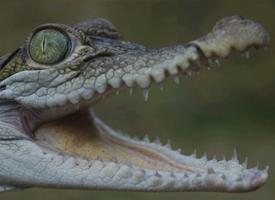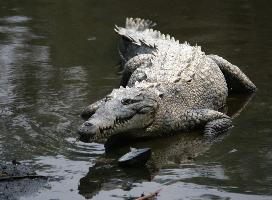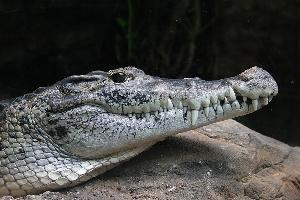
Greutăți și măsuri
| Lungime | de la 2,5 la 3 m |
|---|
Descrierea animalului
The Philippine crocodile, scientifically known as Crocodylus mindorensis, is a fascinating and critically endangered species native to the freshwater habitats of the Philippines. This distinct reptile, also known colloquially as the Mindoro crocodile or the Philippine freshwater crocodile, is one of the most threatened crocodile species worldwide, with its population severely diminished due to a combination of factors including habitat destruction, hunting, and human conflict.Physical Characteristics:
The Philippine crocodile is relatively small compared to other crocodilian species. Adult males typically reach lengths of about 3 meters (9.8 feet), although the largest recorded specimen was around 3.2 meters (10 feet), while females are generally smaller. This species exhibits a broad snout and heavy armor, including bony plates known as osteoderms that cover its back. The coloration of these crocodiles can vary but generally includes a dark olive or grayish back with a creamy white underside, providing camouflage in their natural riverine environments. Juveniles display a more striking pattern with dark bands on their body and tail, which fade as they mature.
Habitat and Distribution:
Originally, the Philippine crocodile could be found throughout the Philippines in freshwater environments such as rivers, ponds, and marshes. However, their numbers have drastically declined, and their presence is now limited to a few fragmented locations, including parts of Mindanao and Luzon. These crocodiles prefer clean, freshwater habitats where they can access ample food sources and nesting sites.
Diet and Behavior:
The Philippine crocodile is a carnivorous predator that feeds on a variety of prey. Its diet includes fish, reptiles, birds, and small mammals. Juveniles tend to consume invertebrates and small fish before graduating to larger prey as they grow. These crocodiles are known for their stealth and patience, often waiting motionless for the perfect moment to ambush their prey.
Reproduction and Lifecycle:
The reproductive behavior of the Philippine crocodile involves nest-building and egg-laying. Females typically lay eggs once a year, with clutches averaging from 7 to 20 eggs. These eggs are deposited in nests made from vegetation and are incubated for about 85 days. The female crocodile guards the nest vigilantly until the eggs hatch, at which point she may assist her young in reaching the water. The hatchlings are highly vulnerable and rely on their camouflage and the protection of their mother to survive.
Conservation Status:
The Philippine crocodile is listed as Critically Endangered by the International Union for Conservation of Nature (IUCN). Its population is believed to be fewer than 250 mature individuals in the wild, making it one of the world's most endangered crocodile species. Conservation efforts are in place to protect and rehabilitate this species, including captive breeding programs, habitat restoration, and local community engagement to reduce human-crocodile conflicts. Despite these efforts, the species faces an uphill battle for survival due to ongoing habitat loss, pollution, and illegal hunting.
The Philippine crocodile represents a critical part of the biodiversity of the Philippines and plays a vital role in the health of its freshwater ecosystems. Protecting this species not only conserves an important part of the country's natural heritage but also ensures the stability of freshwater habitats that countless other species rely on.
Harta răspândirii

Animale similare
Fotografii noi cu animale
Top 10 animale
- Dolphin gull (Leucophaeus scoresbii)
- Diana monkey (Cercopithecus diana)
- Moustached guenon (Cercopithecus cephus)
- Greek tortoise (Testudo graeca)
- Stone loach (Barbatula barbatula)
- Galápagos tortoise (Geochelone nigra complex)
- Japanese macaque (Macaca fuscata)
- Russian tortoise (Testudo horsfieldii)
- Common flying dragon (Draco volans)
- Galápagos penguin (Spheniscus mendiculus)


